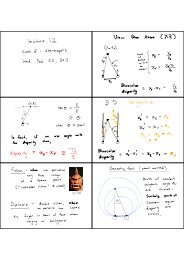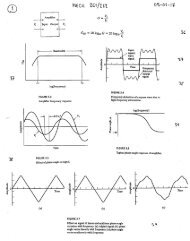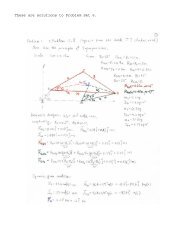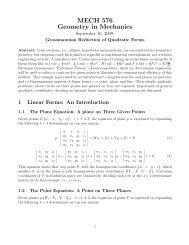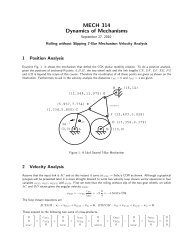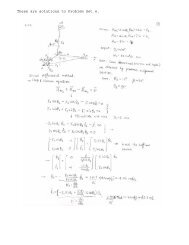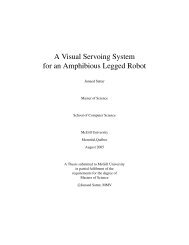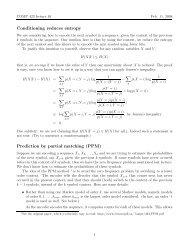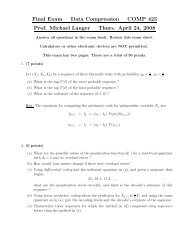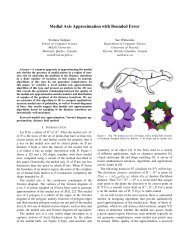Medial Spheres for Shape Representation - CIM - McGill University
Medial Spheres for Shape Representation - CIM - McGill University
Medial Spheres for Shape Representation - CIM - McGill University
You also want an ePaper? Increase the reach of your titles
YUMPU automatically turns print PDFs into web optimized ePapers that Google loves.
1.1.1 Parametric/Boundary <strong>Representation</strong>s<br />
In this type of shape representation, an object’s surface is approximated using simple<br />
patches, each parametrizable. The boundary is thus piecewise parametric, and the individ-<br />
ual patches can be selected and assembled so as to provide varying degrees of smoothness.<br />
The most popular kind of parametric representation is a triangle mesh, where the boundary<br />
is approximated using triangle patches. Such a boundary is thus C 0 -continuous, and often<br />
is designed to be a manifold mesh (locally topologically equivalent to a disk). The reader<br />
is referred to [22] <strong>for</strong> a discussion of mesh manifoldness. Alternative patches based on<br />
splines offer higher-order continuity and faster convergence to the object being modeled.<br />
Polygon meshes are the de facto standard in the computer graphics and geometry<br />
processing communities <strong>for</strong> representing 3D objects. Such meshes may be generated by<br />
connecting points sampled on the shape boundary. The area of ‘surface reconstruction’ is<br />
concerned with the generation of qualitatively useful meshes from point samples. They<br />
may also be generated by artists using modeling tools. Polygon meshes offer sufficient<br />
flexibility to represent both the coarse and the fine levels of detail of the shape being mod-<br />
eled. There exist algorithms that enable efficient operations on meshes, such as simplifica-<br />
tion, smoothing, and de<strong>for</strong>mation. Efficient rendering of polygon meshes is made possible<br />
in practice via hardware acceleration on modern graphics cards. However, en<strong>for</strong>cing mesh<br />
quality, especially as the mesh is altered, can be challenging. Further, because the inte-<br />
rior of the object is not represented explicitly and the number of boundary patches can<br />
be very large, point-location queries and distance tests can be expensive. For a thorough<br />
discussion on advances in polygon mesh processing, please see [22].<br />
4



